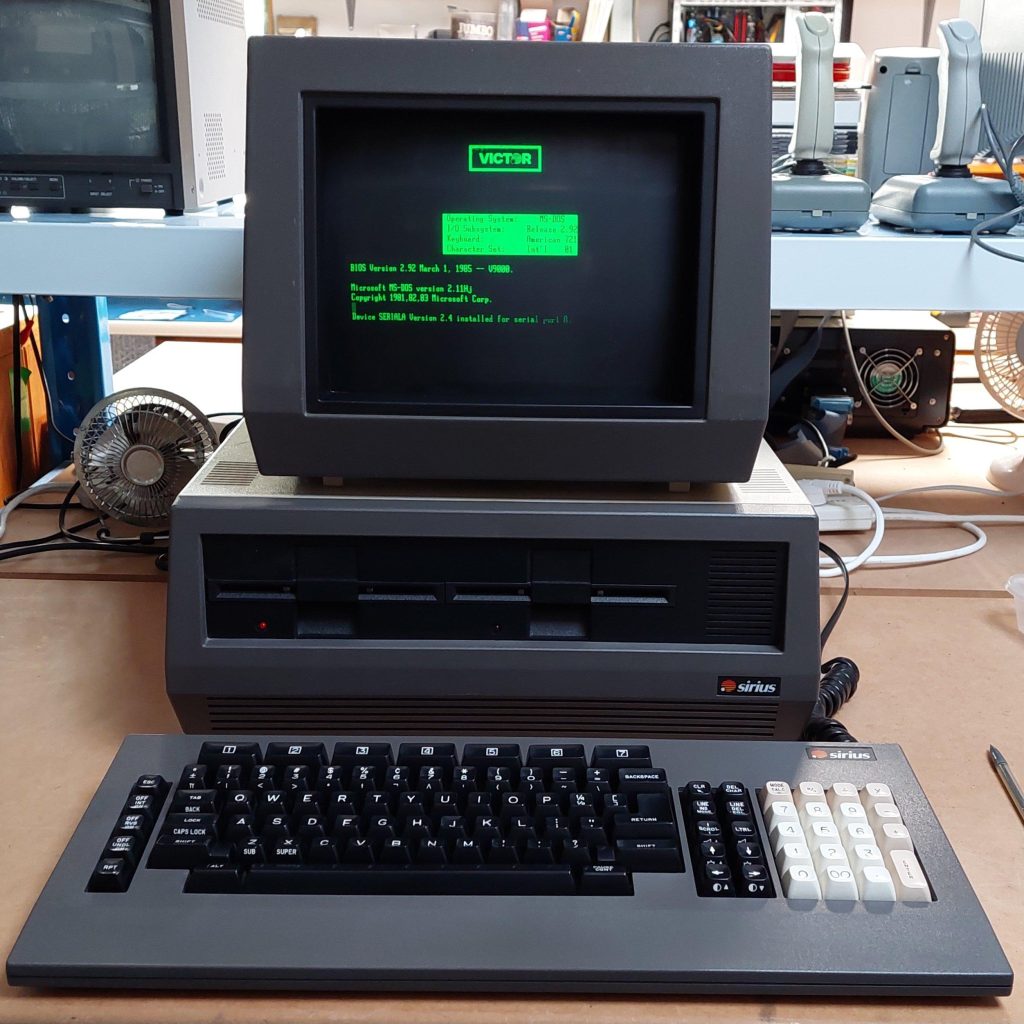The Sirius One was a moderately successful attempt to produce a 16 bit business machine using MS-DOS and CP/M-86. It was targeting a similar market of that of the IBM PC and although it runs the same operating systems as an IBM PC it is not a PC-compatible. Both machines were released in 1981.

The machine was sold as the Sirius One in some markets and as the Victor 9000 in others.
It was designed by Chuck Peddle, who is famous for designing the Commodore PET. It sold well in the UK and Europe.
The Sirius One did have some significant advantages over the IBM PC, including 800 x 400 pixel graphics, more sophisticated sound, and 600k single-sided 80 track 5.25″ drives.
The drives used variable speed to more efficiently use the longer outside tracks. The Apple Macintosh 3.5″ drives used a similar approach.
Furthermore, it has some nice touches like prompting for disks with icons and automatically detecting disks. It is happy to boot from either drive.
Soft keys for contrast and audio volume also add to the feeling that this computer is quite highly evolved for 1981.
Like the IBM PC, it had expansion slots – but not the same as the IBM ISA slots.
This particular machine was spotted by a ARC colleague, Mike, at a former recycling depot. It had been a little mistreated during the “about to be recycled” process, but nothing too severe.
It has 128k of memory on the main board and another 128k on an expansion card. Printer and serial ports were built in.
I think the monitor should be sitting on a pivot base, but that must have been lost along the way.
The Monitor required a simple cable repair after some rough treatment. It’s powered from the main unit.


I inspected the power supply. Somebuddy had powered the unit on fairly recently, probably in preparation for sale, and one of the line filter capacitors had smoked. I replaced 3 X and 2 Y capacitors. I load tested the power supply, and it was good to go.

The drives were in very good condition and i just cleaned and lubricated the rails. One drive light is a little dull.

Overall, the machine gives an appearance of far greater quality than an IBM PC. It comes apart easily.



The keyboard is not great. The foam pads will need to be replaced (like a Compaq Portable or Kaypro II).
The machine did not come with any floppy disks. Fortunately, there are a lot of disk images available online.
Writing them is a bit of a challenge because of the unique format. They need to be written with an 80 track drive but with double density. I used a Panasonic JU-475-5. I tried another drive (Newtronics), but it seemed to only write reduced current for high density disk media.
Fluxengine supports the disk format and is happy to write it using a greaseweazle:
fluxengine write victor9k_ss --drive.rotational_period_ms=166.67 -i dbasemp.img -d drive:0I found this method a little prone to crashes. The alternative is to convert the images to scp format using fluxengine, and then write the scps using greaseweazle. This does not verify the writes, though.
I now have the fluxengine hardware so that’s a third option to try.
The screen is very sharp. The brightness is controlled with soft keys. The monitor has an antiglare mesh built in.





Kermit works well.
At the Sirius end:
- set parity none
- set baud 9600
- set default-disk b:
- set flow-control xon/xoff
At the pc end (Windows 10 with CKW)
- set file type binary
- set baud 9600
- set carrier-watch off
- set flow-control xon/xoff
- cwd <directory>
- send <file>